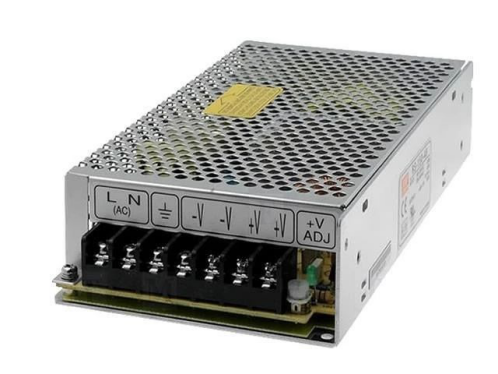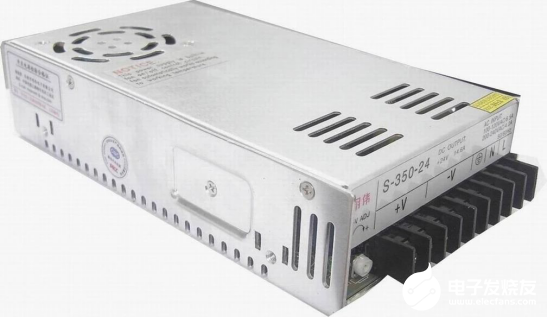What is the difference between switching power supply and ordinary power supply?
What is a switching power supply?
With the development and innovation of power electronics technology, switching power supply technology is also constantly innovating. At present, the switching power supply is widely used in almost all electronic devices due to its small size, light weight and high efficiency. It is an indispensable power supply method for the rapid development of today's electronic information industry.

Switching power supply is a kind of power supply that uses modern power electronics technology to control the time ratio of switch on and off to maintain a stable output voltage. Switching power supply is generally composed of pulse width modulation (PWM) control IC and MOSFET.
Switching power supply is said to be relatively linear power supply, its input end directly rectifies AC power into DC power, and then under the action of high-frequency oscillation circuit, the switching tube is used to control the on and off of the current to form a high-frequency pulse current. With the help of an inductor (high-frequency transformer), a stable low-voltage direct current is output.
Because the core size of the transformer is inversely proportional to the square of the operating frequency of the switching power supply, the higher the frequency, the smaller the core. In this way, the transformer can be greatly reduced, and the power source can be reduced in weight and volume. And because it directly controls DC, the efficiency of this power supply is much higher than that of a linear power supply. This saves energy, so it is favored by people. But it also has shortcomings, that is, the circuit is complicated, maintenance is difficult, and the pollution to the circuit is serious. The power supply is noisy and is not suitable for some low noise circuits.

Characteristics of switching power supply
The switching power supply is generally composed of pulse width modulation (PWM) control IC and MOSFET. With the development and innovation of power electronic technology, the current switching power supply is widely used in almost all electronic devices with its small size, light weight and high efficiency, and its importance can be seen.
Switching power supply classification
According to the way the switching devices are connected in the circuit, switching power supplies can be generally divided into three categories: series switching power supplies, parallel switching power supplies, and transformer switching power supplies.
Among them, the transformer-type switching power supply can be further divided into: push-pull type, half-bridge type, full-bridge type and so on. According to the excitation of the transformer and the phase of the output voltage, it can be divided into: forward type, flyback type, single excitation type and double excitation type.
The difference between switching power supply and ordinary power supply
The ordinary power supply is generally a linear power supply. The linear power supply refers to a power supply in which the adjusting tube works in a linear state. However, it is different in switching power supplies. Switching tubes (in switching power supplies, we generally call adjusting tubes as switching tubes) work in two states of on and off: on-the resistance is very small, off-the resistance is very Big. Switching power supply is a relatively new type of power supply. It has the advantages of high efficiency, light weight, can be raised, lowered voltage, and large output power. However, because the circuit works in the switching state, the noise is relatively large.
Example: Step-down switching power supply
Let's briefly talk about the working principle of the step-down switching power supply: the circuit is composed of a switch (transistor or field effect tube in the actual circuit), freewheeling diode, energy storage inductor, filter capacitor, etc.
When the switch is closed, the power supply supplies power to the load through the switch and inductor, and stores part of the electrical energy in the inductor and capacitor. Due to the self-inductance of the inductor, the current increases slowly after the switch is turned on, that is, the output cannot immediately reach the power supply voltage value.
After a certain period of time, the switch is turned off. Due to the self-inductance of the inductor (it can be more visually believed that the current in the inductor has an inertial effect), the current in the circuit will be kept unchanged, that is, continue to flow from left to right. This current flows through the load, returns from the ground, flows to the anode of the freewheeling diode, passes through the diode, and returns to the left end of the inductor, thereby forming a loop.
The output voltage can be controlled by controlling the time when the switch is closed and opened (ie PWM-pulse width modulation). If the on and off time is controlled by detecting the output voltage to keep the output voltage unchanged, this achieves the purpose of voltage regulation.
The common power supply and the switching power supply have the same voltage regulation tube, which uses the feedback principle to stabilize the voltage. The difference is that the switching power supply uses the switching tube to adjust. The ordinary power supply generally uses the linear amplification area of the transistor to adjust. In comparison, the power consumption of the switching power supply is low, the application range of the AC voltage is wider, and the ripple factor of the output DC is better. The disadvantage is the switching pulse interference.
The main working principle of the ordinary half-bridge switching power supply is that the upper and lower bridge switch tubes (the switch tube is VMOS when the frequency is high) are turned on in turn. First, the current flows in through the upper bridge switch tube, and the storage function of the inductor coil is used to gather electrical energy. In the coil, finally close the upper bridge switch tube, open the lower bridge switch tube, the inductor coil and capacitor continue to supply power to the outside. Then turn off the lower bridge switch tube, and then open the upper bridge to let the current enter, and repeat this way, because it is necessary to switch the two switch tubes in turn, so it is called a switching power supply. The linear power supply is different. Because there is no switch to intervene, the upper water pipe has been draining water. If there is too much, it will leak out. This is the adjustment tube of some linear power supplies that we often see. The endless electrical energy is all converted into heat energy. From this perspective, the conversion efficiency of the linear power supply is very low, and when the heat is high, the life of the component must be reduced, which will affect the final use effect.
The main difference: how it works
The power adjustment tube of the linear power supply always works in the amplification area, and the current flowing is continuous. Due to the large power loss on the adjustment tube, a larger power adjustment tube is required and a large radiator is installed. The heat is serious and the efficiency is very low, generally 40% ~ 60% (it must be said that it is very linear power supply).
The working mode of the linear power supply makes it necessary to have a pressure reducing device from high voltage to low voltage. Generally, they are transformers, and there are other power supplies like KX, and then rectified to output DC voltage. In this way, the volume is large, relatively bulky, low efficiency, and high heat generation; but it also has advantages: small ripple, good adjustment rate, small external interference, suitable for analog circuits / various amplifiers, etc. The power device of the switching power supply works in the switching state. When the voltage is adjusted, the energy is temporarily stored through the inductance coil, so that its loss is small, the efficiency is high, and the requirement for heat dissipation is low, but it has a transformer and energy storage inductance. There are also higher requirements, to use low loss and high permeability materials to do. Its transformer is a small word. The total efficiency is 80% to 98%. The efficiency of the switching power supply is high but the volume is small. However, compared with the linear power supply, its ripple and voltage and current regulation rate are discounted.
If you want to know more, our website has product specifications for power supply, you can go to ALLICDATA ELECTRONICS LIMITED to get more information

